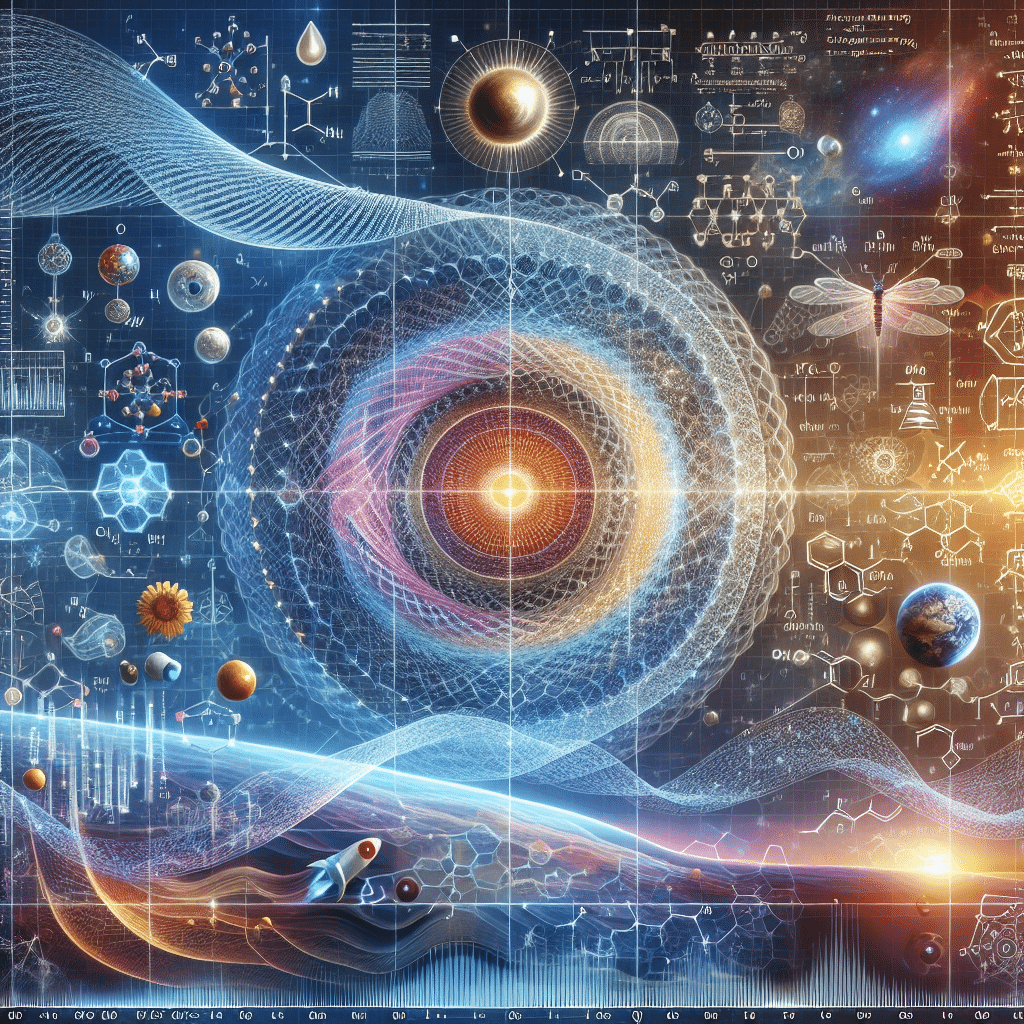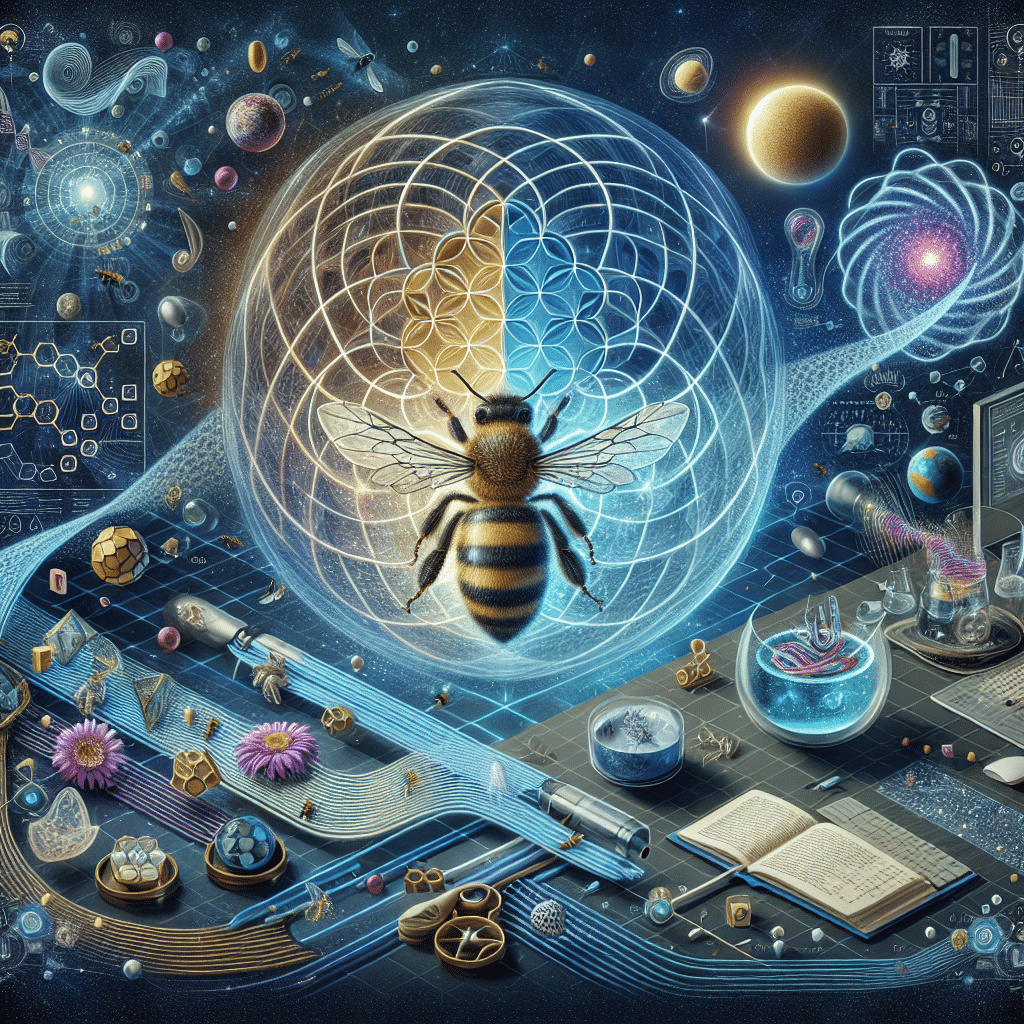Quantum Responsibility and the Bee Theory
The interconnected nature of the universe has long been a subject of debate across physics, philosophy, and ethics. In the realm of quantum mechanics, phenomena such as entanglement, wave-particle duality, and observer-dependent reality challenge the classical notion of separateness. Bee Theory, a wave-based model of gravity and universal interconnection, extends this understanding, proposing that all interactions—whether physical, informational, or conscious—manifest through oscillatory wave dynamics. This article explores how Bee Theory provides a framework for redefining ethical responsibility, arguing that actions, thoughts, and choices propagate as waveforms within a deeply connected cosmic structure. By understanding reality through the lens of wave-based interconnection, we unveil new perspectives on personal responsibility, collective ethical systems, and the long-term consequences of human actions on global and universal scales.



1. Introduction: The Need for a New Ethical Paradigm
1.1 The Classical vs. Quantum Ethical Divide
Traditional ethical frameworks—such as Kantian deontology, utilitarianism, and virtue ethics—operate under classical assumptions of reality: individuals are discrete entities, causality is linear, and moral choices follow deterministic logic. However, quantum mechanics introduces a radically different perspective:
- Non-locality: Entangled particles remain correlated regardless of distance, suggesting that separateness is an illusion.
- Observer effect: Reality at the quantum level depends on measurement, implying that consciousness plays an active role in shaping events.
- Wave-particle duality: The fundamental nature of entities is both deterministic and probabilistic, challenging strict notions of objective morality.
Bee Theory extends these principles by proposing that gravity and all fundamental forces are mediated by wave-based interactions. This implies that human actions—both physical and mental—are not isolated occurrences but are instead wave disturbances in an interconnected reality. Understanding this model leads to a new paradigm of quantum responsibility, where ethical decisions must consider their non-local and long-term wave-based effects.
1.2 The Interconnection Hypothesis in Bee Theory
Bee Theory posits that the fabric of reality is structured as a complex, multi-layered system of resonant wave interactions. Unlike the particle-based Standard Model, which assumes force carriers (bosons) mediate fundamental interactions, Bee Theory suggests:
- Gravity and other forces emerge from wave coherence and interference patterns.
- All entities, from subatomic particles to galaxies, exist as wave resonances within a unified field.
- Consciousness, decision-making, and intention influence wave interactions, linking ethics directly to physics.
This perspective aligns with spiritual and philosophical traditions emphasizing unity, karma, and the ripple effects of human behavior. If reality is a field of interconnected waves, then every thought, emotion, and action contributes to the global resonance pattern. Ethical responsibility, therefore, is not only personal but also a fundamental law of reality.
2. The Quantum Nature of Responsibility
2.1 Non-Locality and the Moral Implications of Interconnection
Quantum entanglement suggests that two particles remain correlated regardless of spatial separation. If reality is fundamentally non-local, then human actions have far-reaching consequences beyond immediate perception.
- Macroscopic Entanglement: While quantum entanglement is traditionally observed at small scales, researchers speculate that biological and cognitive processes may exhibit similar non-local properties.
- Social and Ethical Resonance: Decisions made by individuals may propagate through society as collective wave patterns, influencing others even at great distances.
- Karmic Reciprocity in Wave Interference: Just as wave functions interfere constructively or destructively, ethical actions may amplify or diminish certain global trends.
From a quantum-responsibility standpoint, ethics is not about isolated cause-and-effect but about harmonizing one’s actions with the global wave structure.
2.2 The Observer Effect and the Role of Consciousness in Ethical Decision-Making
In quantum mechanics, the observer collapses a superposition into a definite state. If this principle extends to macroscopic reality, it has profound ethical implications:
- Moral Choices as Reality Collapsers: Ethical dilemmas present multiple potential futures, and decisions act as wave collapsers that determine reality.
- Collective Observer Effects: When many individuals focus on a particular narrative or ideology, it may reinforce and manifest that reality.
- Intentionality and Ethical Responsibility: If thoughts and perceptions influence wave dynamics, moral responsibility extends beyond actions to include intentions and awareness.
This perspective challenges classical moral absolutes and introduces a fluid, dynamic model of ethics based on resonance, coherence, and intentional alignment with the greater whole.
3. Ethical Applications of Bee Theory: From Individual to Global Responsibility
3.1 Personal Ethics in a Wave-Based Universe
If reality is a field of interconnected oscillations, then personal ethics must be reconsidered in terms of resonance and coherence:
- Resonance Ethics: Ethical behavior aligns individual actions with the larger harmonic structure of reality. Acts of kindness, compassion, and integrity create constructive interference, while selfishness and violence introduce discord.
- Wave Feedback and Self-Reflection: Just as wave interactions exhibit feedback loops, personal ethical choices return as vibrational consequences, reinforcing or disrupting coherence.
- Mindfulness and Vibrational Awareness: Practices such as meditation, intentionality, and deep reflection help individuals tune their actions to positive wave harmonics.
This approach suggests that morality is not a set of fixed rules but a practice of attuning oneself to the natural resonant frequencies of the universe.
3.2 Collective Responsibility and Societal Ethics
Beyond individual ethics, Bee Theory has profound implications for collective human behavior:
- Political and Economic Systems as Wave Structures: Governments, economies, and social movements function as large-scale resonant fields. Ethical governance requires tuning these systems to optimal harmonic states.
- Media and Information Flow as Quantum Influence: News, propaganda, and digital media shape public perception through wave dynamics. Ethical responsibility includes curating information that enhances coherence rather than amplifying division.
- Environmental Ethics and Sustainability as Harmonic Equilibrium: Ecological systems function as natural resonant structures. Ethical environmental responsibility means maintaining balance rather than disrupting planetary wave harmonics.
From this perspective, societal evolution depends on aligning human institutions with natural resonance patterns rather than imposing artificial, non-harmonic structures.

4. Future Research and Implications
4.1 Experimental Approaches to Quantum Responsibility
To further investigate the principles of Bee Theory and ethical interconnectivity, future research should explore:
- Quantum Biofield Studies: Investigating how biological systems exhibit entanglement-like properties and whether human consciousness can influence external wave phenomena.
- Wave-Based Decision-Making Models: Developing computational models to analyze ethical dilemmas through interference patterns and wave harmonics.
- Long-Term Ethical Feedback Loops: Studying how historical ethical trends manifest in societal wave structures over time.
4.2 Technological and Scientific Applications
If Bee Theory’s model of interconnected responsibility is correct, it has significant applications:
- Quantum Computing for Ethical AI: Designing artificial intelligence systems that operate on wave-based ethical reasoning rather than binary logic.
- Resonance-Based Healing Technologies: Developing medical treatments that align cellular structures with optimal vibrational frequencies.
- Energy Systems Inspired by Wave Dynamics: Creating sustainable energy sources that utilize coherent resonance rather than extraction-based paradigms.
5. Conclusion: Toward a Unified Ethical Science
Bee Theory offers a groundbreaking way to understand ethics—not as a rigid set of laws but as an emergent property of a wave-based, interconnected universe. By embracing quantum responsibility, humanity can transcend outdated ethical frameworks and move toward a harmonic, resonance-based morality that aligns with the natural structure of reality.
Future advancements in science, philosophy, and governance must integrate this wave-based perspective to create a sustainable, coherent, and ethically responsible civilization. Only by recognizing our deep interconnectedness can we begin to act as true stewards of the quantum fabric of existence.